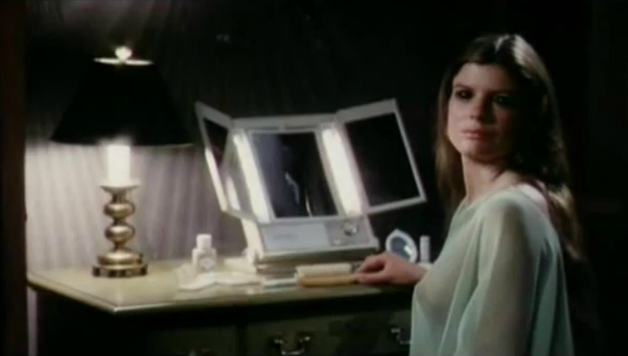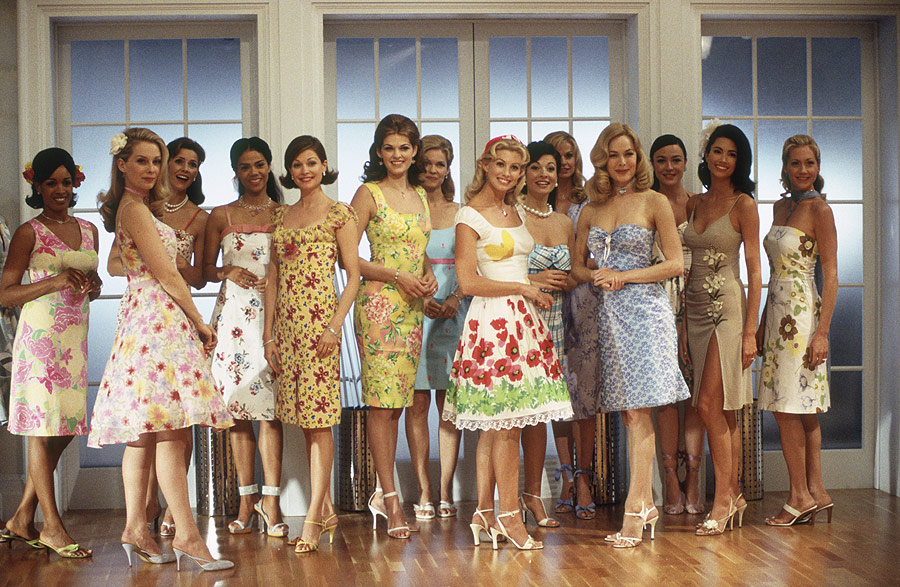Both The Stepford Wives novel and the first movie came about during the second wave, so it stands to reason that elements of second-wave feminism would appear in the film – and they do. For example, protagonist Joanna Eberhardt (Katherine Ross) and her friends Bobbie Markowe (Paula Prentiss) and Charmaine Wimperis (Tina Louise) attempt to hold a “consciousness-raising” session. This was a popular activity for late-20th century feminists, where women met in groups and discussed personal, political, and social issues. However well-intentioned Joanna, Bobbie, and Charmaine’s efforts, the other Stepford wives foil the meeting by monopolizing the discussion with cleaning tips. While Levin never explicitly states what leads the men of Stepford to begin killing their wives and replacing them with animatronic copies, it could be interpreted as a dramatic fear reaction to the second-wave feminist movement. Many women were no longer content to hold the same sociocultural roles they always had – roles which benefitted men. Their efforts to gain equality in educational and professional spaces threatened men’s status as the dominant group. Levin’s novel and the first film adaptation predate televangelist Pat Robertson’s infamous quote - "The feminist agenda is not about equal rights for women. It is about a socialist, anti-family political movement that encourages women to leave their husbands, kill their children, practice witchcraft, destroy capitalism and become lesbians” (Bentz, 1) – but his statement accurately describes how many men and women were feeling as the second wave rose up and continued to flourish. The 1975 Stepford Wives also retains the whitewashed quality of second-wave feminism. Late in Levin’s novel, after most of her other friends have been turned into robots, Joanna befriends Ruthanne Henry, a new resident and the first African-American woman in Stepford. The Stepford Wives movie removes her from the plot entirely. While the 2004 version of The Stepford Wives has minor characters of color, it is, for the most part, equally white-centric, one of the only qualities it shares with its predecessor.
As I have displayed here, film adaptations of The Stepford Wives take on qualities of the dominant feminist culture. I believe that this is inescapable, due to the nature of the source material, which was so heavily steeped in a time period where the movement flourished. Even if another filmmaker were to attempt to remake the film and be as accurate to the source as possible during the creative process, I believe that modern values and attitudes would still be present.
Works Cited
Bentz, Leslie. “The Top 10: Facebook “Vomit” Button for Gays and Other Pat Robertson Quotes.” CNN.com. Cable News Network \ Turner Broadcasting System, Inc. 9 July 2013. Web. 11\19\16.
N.a. The Stepford Wives (2004) – Trivia. IMDB. N.d. Web. 11\18\16
Straub, Peter. Afterword. The Stepford Wives. By Ira Levin. New York. HarperCollins. 2002. Print.
[1]Whether this is a gesture of inclusivity or tokenism is up to individual interpretation.





 RSS Feed
RSS Feed
